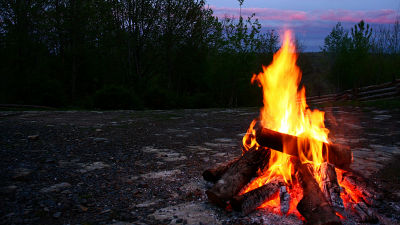It turns out that the Indian sculpture "Petroglyph" had a role of calendar

Painting on rocksPetroglyphIs a culture that is also known to exist around the world and it is regarded as one of important materials for knowing the lives of people of ancient times. Ethnic Indians who are indigenous people in the United States also have ethnic groups with cultures that draw petroglyphs and it is clear that there is a calendar in this petroglyph that accurately indicates the time of crops and religious celebrations became.
BBC - Travel - Arizona's mysterious clock of ancient times
http://www.bbc.com/travel/story/20180516-arizonas-mysterious-clock-of-ancient-times
There are numerous petroglyphs in the V Bar V heritage site in Arizona State, one of which has a picture of animals and plants and two stones inserted in the upper crack Yes. In 2005, researcher Kenneth Zorr discovered that some sort of shadow pattern was projected by the sun's shining of the two stones overhead of the Petroglyph.

Mr. Zor told the archaeologist of the American Forest Department this discovery. Then, the archaeologist in the forest department tells Mr. Zor to tell him to observe the Petroglyph so as to investigate whether the people who painted the petroglyphs had grasped the seasons "I want you to observe the results for one year" .
When Mr. Zor began observing the Petroglyph, the shadow of the Petroglyph pointed to the six pictures at the summer solstice on June 21, and in the winter solstice of December the sunlight passed through the gap between the two rocks, and the entire Petroglyph It turned out to light up. Mr. Zorr said that Petroglyph may have a role as a calendar of ancient people, as regularity was observed in the shape of the shadow formed by sunlight.
The Sinawa tribes who are said to have drawn this Petroglyf are said to have grown corn, cotton, pumpkin, and beans from the 7th century to the 15th century. Mr. Zor thought that this calendar is likely to be attributed to agriculture talked about the calendar to the Hopi tribe descended from the Sinawa. Then, we found that this Petroglyph has a strong relationship with religious celebrations and important events in agricultural work.

On April 21 when the Hopi tribe first plants, the shadow of the Petroglyph touches a picture like a stem of corn. Besides this, the Hopi tribe performs 16 days of prayer and meditation as a religious event, but on the last day of July 8, the sun is outline of the person who seems to be dancing It was also confirmed that I was drawing a Petroglyph. Due to this strong relationship, Mr. Zor is convinced that this Petroglyph is a calendar of the Sinawa family. Also, the Arizona Archaeological Society that received this discovery expresses this Petroglyph as "a time machine that teaches time for ceremonies for God."
Hopi Floyd Romakovaya said, "I am proud that my ancestors left this petroglyph, we have different rituals every month and do a variety of things, that is our calendar , Petroglyphs will guide us. "
Related Posts:
in Note, Posted by darkhorse_log







